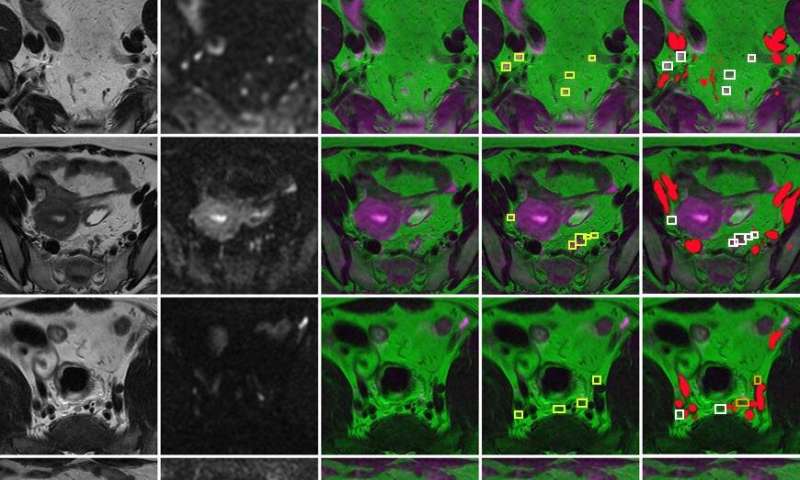
Multiparametric magnetic resonance imaging (mpMRI) has been accepted as the preferred alternative for rectal cancer diagnosis. N-staging is necessary for all MR reports, for which accurate detection and segmentation of lymph nodes (LNs) are the prerequisites.
However, the bottleneck of current diagnosis methods is the low efficiency of LN identification under the background of multiple organs and multiple intervals. Besides, when the number of slices is more than 20, it will take 3-10 minutes for experienced radiologists to complete the LN detecting of a patient and the results will be affected by the detector’s subjective experience, environment, and may contribute to misdiagnosis.
An intelligent recognition method has been developed and firstly applied to achieve automatic LN detection and segmentation (auto-LNDS) of RC patients before surgery. This development was achieved by GAO Xin’s research team from the Suzhou Institute of Biomedical Engineering and Technology of th Chinese Academy of Sciences (SIBET, CAS), in collaboration with MENG Xiaochun from Sixth Affiliated Hospital of Sun Yat Sen University, and other three 3A hospitals spread across different regions in China.
Three hundred seventy-three RC patients were enrolled in this study. The annotations of three senior experts were used as the ground truths for model training. Fused T2-weighted images (T2WI) and diffusion-weighted images (DWI) provided input for the deep learning framework of Mask R-CNN through transfer learning to generate the auto-LNDS model.

The results show that the model has an excellent performance in detecting different scales LNs compared with other reported algorithms (Fig. 1). The size of the detected LNs is smaller (the short diameter is as small as 3mm), and the accuracy is higher, which is better than the reported algorithms and junior radiologists (Table 1).
In addition, it takes only 1.37 seconds to detect and segment all the LNs of a patient, which is 131 times faster than the doctor’s detection speed.
This model could help to minimize differences in LNs detection between radiologists, increase the efficiency of the clinical workflow, and also has the potential to assist physicians in determining the nodal stage. Besides, this method can be extended to the preoperative evaluation of N staging of tumors in various parts of the body based on multimodal images (PET, CT, MRI, etc.), which has a high clinical significance and play an important enlightenment role for automatic identification of LNs in the chest, abdomen and even the whole body.
Source: Read Full Article
